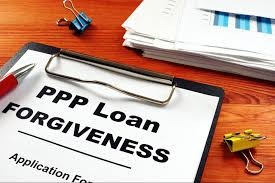
The Payment Protection Program (PPP) Flexibility Act of 2020 was designed to modify certain provisions related to loan forgiveness under the paycheck protection program. It lets recipients defer payroll taxes and other business-related expenses. In other words, the program helps relieve small businesses and their employees from the economic impact of COVID-19.
As of this writing, the information provided is based on official Small Business Administration (SBA) guidance from the SBA’s PPP Loan Forgiveness Application Form (SBA Form 3508) and has been updated with information from the more recent Payroll Protection Program Flexibility Act.
The deadline to apply for a PPP loan has been extended to August 8, 2020. For more information, go to Fundbox.com to apply.
What is PPP?
The Payment Protection Program (PPP) helps business owners, including self-employed, who want to apply for a loan that’s 2.5 times their average monthly payroll.
According to the Coronavirus Aid, Relief, and Economic Security Act (CARES), which established the PPP loan to help small businesses maintain their employees and their payroll (or your own expected income in the case of sole proprietors or independent contractors) over the next of 24 weeks, qualified businesses can borrow up to $10 million at a 1% interest rate, calculated based on 2.5 times your average monthly payroll costs.
The CARES Act is designed to keep employees (or yourself) paid and employed, with some allowance for operating expenses, such as business rent, vehicle payments, and utilities. Generally, your business may be eligible for full loan forgiveness if you allocate 60% of the loan money to keeping all your full-time equivalent staff on the payroll, and you allot no more than 40% for other overhead. If you fail to meet these requirements by using less than 60% of the loan amount for payroll costs during the forgiveness covered period, you may be eligible for partial loan forgiveness, according to a joint statement issued by SBA Administrator Jovita Carranza and Treasury Secretary Steven Mnuchin.
The PPA loan is a 1% interest loan that can be converted into a grant—provided you spend the funds according to the rules as outlined. However, loan forgiveness isn’t automatic. As a borrower, you’ll have to request and submit detailed forgiveness documentation to your lender.
Completing the PPP Loan Application
The most complicated part of filling out the forgiveness application is completing the payroll sections, which cover:
- Salary, wages, commissions, or similar compensation
- Payment of cash tips or equivalent, based on employer records of past tips or, in the absence of such records, a reasonable, good-faith employer estimate of such tips
- Payment for vacation, parental, family, medical, or sick leave
- Allowance for dismissal or separation
- Payment that covers employee benefits, including insurance premiums (employer cost)
- Payment of any retirement benefit (employer cost)
- Payment of state or local tax assessed on employee compensation
- During the covered period, you must spend the funds on specific items, mainly payroll
- Apply for forgiveness through your lender and provide the required documentation
- Lender has up to 60 days to respond to your request for forgiveness and ideally agree. This is when the balance is forgiven
- Any balance not forgiven becomes a loan at 1% interest for 2 years or 5 years, provided the loan is made on or after June 5, 2020.
Because the application involves configuring a number of calculations, consider getting help from your accountant or financial advisor.
Now That I have the PPP Loan…
… you now have 24 weeks (or until December 31, 2020, whichever comes sooner) to use the funds appropriately. Otherwise, you’ll have to repay the loan within the next 5-10 years (depending on your lender).
You need to keep top-of-mind two overarching principles related to the PPP loan program: follow the PPP’s intent and keep detailed evidence, including records/documentation during the loan forgiveness period, and copies of the documents you provided when applying to your PPP lender.
Once your loan has been approved, you’ll receive an email with an SBA loan number and loan amount. Do the math immediately, because you’ll need to know three important facts:
- Calculate 60% of the total loan amount you receive and earmark it for payroll. That’s the minimum you must spend on payroll over the next 24 weeks (if approved prior to June 5, 2020, you can select an 8-week period) to be eligible for full forgiveness. To keep it simple, say your loan is for $50,000. You’ll need to pay at least $30,000 of the loan to your employees.
- Determine how much you paid your salaried and hourly employees.
- Keep track of funds that covered payroll expenses during the forgiveness window or were sustained, which means the payroll costs were incurred during the forgiveness window but the pay date fell after the end of the forgiveness window.
- Note how many FTE employees you have.
- Configure each employee’s average monthly salary or wage.
Full-time equivalent (FTE) can take into account both full-time and part-time employees. Be aware that you must maintain the same number of FTE employees and their salaries during the 24-week forgiveness period, because your total loan forgiveness can be diminished if you reduced your employee headcount or compensation during this time.
To determine your exact number of FTE employees, enter the average number of hours paid per week, divide by 40, then round the total to the nearest tenth. The maximum for each employee needs to be capped at 1.0. More importantly, be sure to keep records that show how you configured these calculations.
Any reduction in loan forgiveness needs to be based on the difference between two numbers: the number of FTEs who work during the 24-week loan window and the number of FTEs who work during one of the following baseline periods (whichever is lower): February 15, 2019 to June 30, 2019 (19 weeks) or January 1, 2020 to February 29, 2020 (8 weeks).
Other Considerations
If your business happens to be seasonal, you can use either range of dates or any consecutive 12-week period between May 1, 2019 and September 15, 2019, whichever yields the lower FTEs.
As an example, if you had 20% fewer FTE employees during the full 24-week loan window, then your loan forgiveness may be reduced by 20%, respectively.
At all cost, make sure you avoid layoffs, because they can affect your loan forgiveness. If you had to lay off or temporarily furlough employees between February 15, 2020 and April 26, 2020, you can still avoid a reduction penalty provided that you rehire those employees or their equivalent by December 31, 2020, for them to be counted in the 24-week forgiveness period.
Even if those specific employees do not wish to return, as long as you hire equivalent employees to replace them, and you pay them at least 60% of the previous compensation, you can avoid the forgiveness penalty for reduction in pay.
If you’re self-employed, you’re entitled to use the PPP loan to replace lost compensation due to the impact of COVID-19. However, new guidance prevents self-employed individuals from claiming the entire amount as income replacement.
If you have mortgage interest, rent, or utility expenses, you must have claimed or be entitled to claim a deduction for those expenses on your 2019 Form 1040 Schedule C in order for to be eligible for forgiveness. This means that you need to either have your 2019 taxes filed, or prepared and ready to file.
If you worked in an office space in 2019 and did not have a home office, you cannot claim a deduction on your home mortgage interest. Even if you’re currently working at home, you’re not eligible to claim home mortgage interest payments for forgiveness.
If a laid off or furloughed employee refuses to come back and work the same hours at the same salary as prior to the layoff, you need to document this. It’s critical that you keep written records of this communication and the fact that the employee refused the offer, because you’ll need to include it with your loan forgiveness application. These particular FTE hours won’t be counted in your comparative averages, and you may still qualify for loan forgiveness.
If your business fails to restart, you may be exempt from the FTE headcount rule…if “the employer is able to document an inability to return to the same level of business activity as such business was operating at before February 15, 2020, due to compliance with requirements established or guidance issued by the Secretary of Health and Human Services, the Director of the Centers for Disease Control and Prevention, or the Occupational Safety and Health Administration during the period beginning on March 1, 2020, and ending December 31, 2020, related to the maintenance of standards for sanitation, social distancing, or any other worker or customer safety requirement related to COVID–19.”
Even if it’s not timely for you to reopen your business, continue to pay your employees. This program was designed for small businesses to keep their employees rather than lay them off and put them on unemployment, according to Neil Bradley, executive vice president and chief policy officer at the U.S. Chamber of Commerce.
Avoid wage cuts; otherwise, your loan forgiveness may be reduced if you cut the average wage of an employee by more than 25% of their average wage based on what you paid them in 2019. Or, if 2019 data isn’t applicable, you need to base it on their gross wages in the first quarter of 2020. However, this rule doesn’t apply to employees who earned an annual salary of $100,000 or more in 2019. Or $8,333 per month.
You also need to keep in mind that there’s a limit to the cash compensation any individual employee receives this 24-week period.
If your business doesn’t return to its pre-February 15, 2020 status, you may be exempt from the FTE headcount rule, according to the PPPFA, as stated earlier.
Keep Track of Your PPL Loan
To help you track your PPL loan, consider opening a separate bank account. This will help you to better manage, track, and later document your loan’s appropriate usage. If you do this, don’t forget to switch your payroll withdrawal account to your dedicated PPP account for the 24-week period.
Monitor your progress about halfway through the forgiveness period. Keep track of how you spent the funds; if you find that 60% of your expenses haven’t gone towards payroll, or that your average FTE headcount or employee wages fall below your thresholds, you may still have time to make necessary adjustments, taking into consideration that you can consider “hazard pay” bonuses, give people promotions and raises, or hire new employees.
- Make sure that you didn’t reduce your headcount during the forgiveness window (unless you can show good faith that you made every effort). Be sure that you paid each of your employees at least 75% of their average wage.
- Make sure that you used up to 40% of the remainder of the loan to cover allowable expenses, including rent or mortgage payments for your business
- Or interest payments on a mortgage or other loan (such as an auto loan) related to your business. However, any interest payments on any other debt incurred before February 15, 2020 is not eligible for loan forgiveness
- Document making utility payments for your business
Also, keep track of when the covered period for loan forgiveness ends. If your loan forgiveness window has closed, whether on or before December 31, 2020, whichever comes sooner, you can submit a forgiveness request to your lender. You have 10 months after the last day of the covered period to apply for interest-free forgiveness. If you miss this deadline, you may have to make principal, interest, and fee payments on the covered loan beginning on the day that’s not earlier than the date 10 months after the last day of your covered period.
The following may seem repetitive, but it’s important to emphasize. Document how you used the PPP proceeds and show that you used at least 60% of the loan to cover payroll costs. If you’re an independent contractor, you need to prove that you replaced your compensation based on your 2019 net income.
Organize what you need before the end of the loan forgiveness program. Find out if your lender requires specific documentation.
Once the documents have been submitted, your lender has 60 days to decide whether to issue loan forgiveness.
If you don’t receive loan forgiveness, know that the amounts not forgiven convert into a 1% interest loan, payable over the next 5-10 years, based on your lender. You even have a grace period where no payments would be required until the SBA remits the forgivable amount to your lender. If you don’t request forgiveness, you won’t have to make any payments for 10 months from the date of loan disbursement, but interest will still accrue from the date the loan was disbursed.
Whatever you do, be honest with how you use the funds. Otherwise, you could be subject to additional charges for making knowing violations or misappropriations. And, the SBA may have direct recourse against such a shareholder, member, or partner for unauthorized use.




